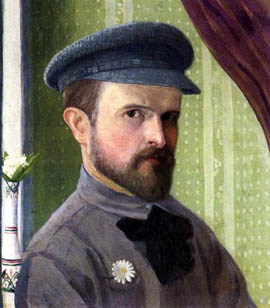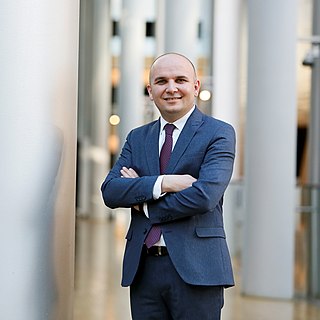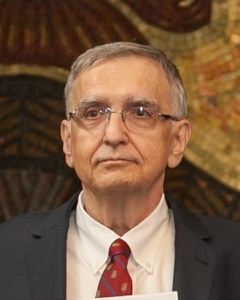This article relies largely or entirely on a single source .(April 2011) |
Praise of Bogdiin Khuree, also known as Praise of Bogd Dunjingarav, is a Mongolian folk song praising the city of Urga (now known as Ulaanbaatar) in Mongolia.
This article relies largely or entirely on a single source .(April 2011) |
Praise of Bogdiin Khuree, also known as Praise of Bogd Dunjingarav, is a Mongolian folk song praising the city of Urga (now known as Ulaanbaatar) in Mongolia.
According to legend the song was originally sung by a man condemned to death who was pardoned his punishment after turning to look back at the city and singing its praises. Structurally and stylistically the song follows the pattern of traditional Mongolian epics in the way it frames its praise. Mount Bogd Khan Uul is called "Dunjingarav" which is its Tibetan name (e.g. "Khagan Dunjingarav", "Bogd Dunjingarav" and "Baghatur Dunjingarav").
The song dates back to the era of Manchu dominance (1691–1911) and includes references to Manchu imperial decrees (zarlig) the local Manchu governor (amban) and the Chinese commercial district (naimaa khot). It praises various aspects of Urga: its location at the foot of "savior Dunjingarav" where the "golden Tuul" river flows, its civil, religious, military and police administration, its "rich markets", its "80 elbow tall Maitreya statue" (built in 1833 and destroyed with its temple in 1933), its innumerable monasteries filled with "quick-witted disciples", its caravans and endless pilgrims.
The detailed praise of Mount Bogd Khan Uul in the beginning follows the Mongolian epic tradition of praising the natural surroundings of the camp of a hero (in this case the "khuree" or camp of the Jebtsundamba Khutuktu). [1] [2] [3] The first part with lyrics relating to Mount Dunjingarav was included in Egschiglen's rendering of the song using the original melody (YouTube link ).
The song exists in various versions with differing lyrics, the earliest of which is probably that of Dash Khuurch as documented in Tseveen Jamtsarano's book "Obraztsy mongol'skoi narodnoi literatury", published in St. Petersburg in 1908. Other written versions include the storyteller Togtool's version kept in the Oral Literature Library of the Literature Academy, and Omnogobi province commune herder Nansalmaagiin Chuluunjav's version. The song is said to have been composed by Norov Khuurch (meaning Norov the morin khuur player) of Urga.
It is featured in the soundtrack of "A Little Bit Mongolian", a documentary film about an Australian boy who travels to Mongolia to compete in a horse race.

Ulaanbaatar, previously anglicized as Ulan Bator, is the capital and most populous city of Mongolia. With a population of 1.6 million, it is the coldest capital city in the world by average yearly temperature. The municipality is located in north central Mongolia at an elevation of about 1,300 metres (4,300 ft) in a valley on the Tuul River. The city was founded in 1639 as a nomadic Buddhist monastic centre, changing location 28 times, and was permanently settled at its modern location in 1778.

Ivan Vasilievich Kliun, or Klyun, born Klyunkov was a Russian Avant-Garde painter, sculptor and art theorist, associated with the Suprematist movement.

The Bogd Khan Mountain is a mountain in Mongolia that overlooks the nation's capital, Ulaanbaatar, from a height of 2,261 metres (7,418 ft) to the south of the city.
Erdeniin Bat-Üül is a Mongolian politician from the Democratic Party and a former mayor of Ulaanbaatar City and governor of the Capital City.
The Baraba are a sub-group of Siberian Tatars and the indigenous people of the Ob-Irtysh interfluve. After a strenuous resistance to Russian conquest and much suffering at a later period from Kyrgyz and Kalmyk raids, they now live by agriculture — either in separate villages or along with Russians. Some of them still speak Baraba dialect of Siberian Tatar language. They traditionally live on the Baraba steppe.

North Macedonia–Russia relations are bilateral relations between the Republic of North Macedonia and the Russian Federation. North Macedonia has an embassy in Moscow and a consulate in St. Petersburg, while Russia has an embassy in Skopje and consulates in Bitola and Ohrid. Chargé d'Affaires of North Macedonia in Moscow is Olivera Čauševska-Dimovska, while the Russian ambassador in Skopje is Sergey Bazdnikin.
MarinVarbanov was born in Oryachovo, Bulgaria, and was a Bulgarian painter and modern tapestriest.

Petar Malinov is a retired Bulgarian footballer and current assistant manager of Slivnishki geroi, having started the role in May 2010.
The International Cinematographers Film Festival "Manaki Brothers" is an annual international film festival organized by the Macedonian Film Professionals Association (MFPA). The festival is held in Bitola, the town where most of the activities of the Aromanian brothers Yanaki and Milton Manaki were organized. They were the filmmakers, who in 1905 filmed in Avdela the first motion pictures in the Ottoman Balkans. Each year the festival is supported by the Ministry of Culture of Macedonia and the President of North Macedonia. The award of the festival is Camera 300 that given to the year's best motion pictures chosen by the festival's film committee. The Manaki Film Festival has been hosted at the Center of culture, with screenings at the Big Hall, located in the center of Bitola and has been attended by celebrities such as Michael York, Charles Dance, Victoria Abril, Daryl Hannah, Catherine Deneuve, Isabelle Huppert, Julliette Binoche, Aleksei Serebryakov, Bruno Ganz, Claudia Cardinale, Fatih Akin.
Plovdiv Zoo is a zoo located in Bulgaria's second largest city, Plovdiv.
Tatyana Fendrikova is a volleyball player from Kazakhstan. Multiple owner of the best player in Kazakhstan!
The history of Ulaanbaatar, the capital of Mongolia, dates to 1639 when it was first established as a moveable monastery.

Ilhan Kyuchyuk is a politician from the Movement for Rights and Freedoms (MRF). and Co-president of the Alliance of Liberals and Democrats for Europe party. He has been a member of the European Parliament for two terms from the Renew Europe group.

Yordan Todorov is a Bulgarian footballer who plays as a winger. He is currently played for FC Slivnishki Geroy (Slivnitsa).
The Kalmak Tatars are one of the three subgroups of Tom group of Siberian Tatars. Their traditional areas of settlement are northeastern parts of Kemerovo Oblast, close to town of Yurga.
Spokoyny is a rural locality in Krasnooktyabrskoye Rural Settlement of Maykopsky District, Russia. The population was 38 as of 2010. There is one street.

Larry Koroloff is a Bulgarian-Canadian historian, linguist, and educator, activist of the Macedonian Patriotic Organization, editor-in-chief of the “Macedonian Tribune” newspaper, and head of the patriotic organization “Macedonia: Switzerland on the Balkans”, situated in Toronto.
Mihajlo Mladenovikj is a Serbian-born Macedonian handball player who plays for RK Alkaloid and the Macedonian national team.
General of the Army Batyn Dorj was a Mongolian statesman and military leader in the Mongolian People's Republic. He was one of the first 11 generals in Mongolia. Dorj is regarded as one of the most influential and consequential Mongolian government, military and social figures of the twentieth century.

Dzhigda, also known as Jigda is a village in the center of Khabarovsk Krai, Russia along the Maya river. The village is connected by a small road and contains 79 buildings within its jurisdictional area. Dzhigda's total population, of mainly Russians and Evenks, as of 2022, is 230, after having steadily decreased from 1992's census of 432.